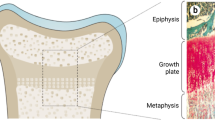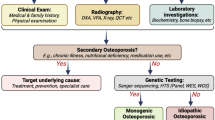Abstract
Pseudoxanthoma elasticum (PXE) is an autosomal recessive disorder characterized by ectopic mineralization of connective tissues and shows considerable intra- and inter-familial phenotypic variability. PXE is caused by mutations in the ABCC6 gene, and targeted ablation of Abcc6 in mouse recapitulates PXE. In this study, we examined the hypothesis that the GGCX gene encoding γ-glutamyl carboxylase may interfere with the mineralization process in Abcc6 −/− mice. Thus, Abcc6 −/− and Ggcx +/− mice were generated on 129S1;C57 and 129S1;129X1;C57 genetic backgrounds, respectively, and backcrossed with C57BL/6J for five generations. Thus, these strains differ by the 129X1 contribution to the background of the mice. We then generated Abcc6 −/− ;Ggcx +/+ and Abcc6 −/− ;Ggcx +/− mice by crossing Abcc6 −/− and Ggcx +/− mice. The degree of mineralization of connective capsule of vibrissae, a biomarker of the mineralization process in PXE, was evaluated by computerized morphometric analysis and quantified colorimetrically by calcium and phosphate levels in tissues. The mineralization of the vibrissae in Abcc6 −/− mice takes place at ∼5–6 weeks of age and is significantly enhanced at 3 months of age in comparison to wild-type mice (>10-fold, p < 0.001). However, the onset of mineralization in Abcc6 −/− ;Ggcx +/+ mice was delayed until between 3 and 4 months of age, suggesting that the genetic background plays a role in modifying the mineralization process. The mineralization in the Abcc6 −/− ;Ggcx +/− mice was accelerated in comparison with age-matched Abcc6 −/− ;Ggcx +/+ mice, with ∼3-fold difference at 3, 4, and 9 months of age (p < 0.01). The mineralization process was also accelerated in these mice by a special custom-designed diet with mineral modifications. These findings suggest a role for both the GGCX gene and the genetic background as well as dietary factors in modulating the phenotypic severity of PXE caused by loss-of-function mutations in ABCC6.




Similar content being viewed by others
References
Neldner KH, Struk B (2002) Pseudoxanthoma elasticum. In: Royce PM, Steinmann B (eds) Connective tissue and its heritable disorders: molecular, genetic and medical aspects. Wiley-Liss, Inc, New York, pp 561–583
Li Q, Jiang Q, Pfendner E, Váradi A, Uitto J (2009) Pseudoxanthoma elasticum: clinical phenotypes, molecular genetics and putative pathomechanisms. Exp Dermatol 18:1–11
Georgalas I, Papaconstantinou D, Koutsandrea C, Kalantzis G, Karagiannis D, Georgopoulos G, Ladas I (2009) Angioid streaks, clinical course, complications, and current therapeutic management. Ther Clin Risk Manag 5:81–89
McKusick VA (1972) Heritable disorders of connective tissues, 4th edn. Mosby, St. Louis
Christiano AM, Lebwohl MG, Boyd CD, Uitto J (1992) Workshop on pseudoxanthoma elasticum: molecular biology and pathology of the elastic fibers. J Invest Dermatol 99:660–663
Raybould MC, Birley AJ, Moss C, Hultén M, McKeown CM (1994) Exclusion of an elastin gene (ELN) mutation as the cause of pseudoxanthoma elasticum (PXE) in one family. Clin Genet 45:48–51
Cai L, Struk B, Adams MD, Ji W, Haaf T, Kang HL, Dho SH, Xu X, Ringpfeil F, Nancarrow J et al (2000) A 500-kb region on chromosome 16p13.1 contains the pseudoxanthoma elasticum locus: high-resolution mapping and genomic structure. J Mol Med 78:36–46
Le Saux O, Urban Z, Göring HH, Csiszar K, Pope FM, Richards A, Pasquali-Ronchetti I, Terry S, Bercovitch L, Lebwohl MG et al (1999) Pseudoxanthoma elasticum maps to an 820-kb region of the p13.1 region of chromosome 16. Genomics 62:1–10
Pfendner EG, Vanakker O, Terry SF, Vourthis S, McAndrew P, McLain MR, Fratta S, Marais AS, Hariri S, Coucke PJ et al (2007) Mutation detection in the ABCC6 gene and genotype-phenotype analysis in a large international case series affected by pseudoxanthoma elasticum. J Med Genet 44:621–628
Hamlin N, Beck K, Bacchelli B, Cianciulli P, Pasquali-Ronchetti I, Le Saux O (2003) Acquired pseudoxanthoma elasticum-like syndrome in beta-thalassaemia patients. Br J Haematol 122:852–854
Baccarani-Contri M, Bacchelli B, Boraldi F, Quaglino D, Taparelli F, Carnevali E, Francomano MA, Seidenari S, Bettoli V, De Sanctis V et al (2001) Characterization of pseudoxanthoma elasticum-like lesions in the skin of patients with beta-thalassemia. J Am Acad Dermatol 44:33–39
Vanakker OM, Martin L, Gheduzzi D, Leroy BP, Loeys BL, Guerci VI, Matthys D, Terry SF, Coucke PJ, Pasquali-Ronchetti I et al (2007) Pseudoxanthoma elasticum-like phenotype with cutis laxa and multiple coagulation factor deficiency represents a separate genetic entity. J Invest Dermatol 27:581–587
Li Q, Schurgers L, Smith A, Tsokos M, Uitto J, Cowen E (2009) Co-existent pseudoxanthoma elasticum and vitamin K-dependent coagulation factor deficiency. Am J Pathol 174:534–540
Li Q, Grange D, Armstrong N, Whelan A, Hurley M, Rishavy M, Hallgren K, Berkner K, Schrugers L, Jiang Q, Uitto J (2009) Mutations in the GGCX and ABCC6 genes in a family with pseudoxanthoma elasticum-like phenotypes. J Invest Dermatol 129:553–563
Klement JF, Matsuzaki Y, Jiang Q-J, Terlizzi J, Choi HY, Fujimoto N, Li K, Pulkkinen L, Birk DE, Sundberg JP et al (2005) Targeted ablation of the ABCC6 gene results in ectopic mineralization of connective tissues. Mol Cell Biol 25:8299–8310
Zhu A, Sun H, Raymond RM Jr, Furie BC, Bronstein M, Kaufman RJ, Westrick R, Ginsburg D (2007) Fatal hemorrhage in mice lacking gamma-glutamyl carboxylase. Blood 109:5270–5275
LaRusso J, Jiang Q, Li Q, Uitto J (2008) Ectopic mineralization of connective tissue in Abcc6-/- mice: effects of dietary modifications and a phosphate binder—a preliminary study. Exp Dermatol 17:203–207
Siegel S, Castellan N (1988) Nonparametric statistics for the behavioral sciences. McGraw-Hill, Singapore, pp 180–181
Jiang Q, Li Q, Uitto J (2007) Aberrant mineralization of connective tissues in a mouse model of pseudoxanthoma elasticum: systemic and local regulatory factors. J Invest Dermatol 127:1392–1402
Neldner KH (1988) Pseudoxanthoma elasticum. Clin Dermatol 6:1–159
Renie WA, Pyeritz RE, Combs J, Fine SL (1984) Pseudoxanthoma elasticum: high calcium intake in early life correlates with severity. Am J Med Genet 19:235–244
LaRusso J, Li Q, Jiang Q, Uitto J (2009) Elevated dietary magnesium prevents connective tissue mineralization in a mouse model of pseudoxanthoma elasticum (Abcc6-/-). J Invest Dermatol 129:1388–1394
Ringpfeil F, McGuigan K, Fuchsel L, Kozic H, Larralde M, Lebwohl M, Uitto J (2006) Pseudoxanthoma elasticum is a recessive disease characterized by compound heterozygosity. J Invest Dermatol 126:782–786
Berkner KL (2005) The vitamin K-dependent carboxylase. Ann Rev Nutr 25:127–149
Shearer MJ (2000) Role of vitamin K and Gla proteins in the pathophysiology of osteoporosis and vascular calcification. Curr Opin Clin Nutr Mtab Care 3:433–438
Gheduzzi D, Boraldi F, Annovi G, DeVincenzi CP, Schurgers LJ, Vermeer C, Quaglino D, Ronchetti IP (2007) Matrix Gla protein is involved in elastic fiber calcification in the dermis of pseudoxanthoma elasticum patients. Lab Invest 87:998–1008
Luo G, Ducy P, McKee MD, Pinero GJ, Loyer E, Behringer RR, Karsenty G (1997) Spontaneous calcification of arteries and cartillage in mice lacking matrix GLA protein. Nature 386:78–81
Scheffer GL, Hu X, Pijnenborg AC, Wijnholds J, Bergen AA, Scheper RJ (2002) MRP6 (ABCC6) detection in normal human tissues and tumors. Lab Invest 82:515–518
Iliás A, Urban Z, Seidl TL, Le Saux O, Sinkó E, Boyd CD, Sarkadi B, Váradi A (2002) Loss of ATP-dependent transport activity in pseudoxanthoma elasticum-associated mutants of human ABCC6 (MRP6). J Biol Chem 277:16860–16867
Borst P, van de Wetering K, Schlingemann R (2008) Does the absence of ABCC6 (Multidrug Resistance Protein 6) in patients with pseudoxanthoma elasticum prevent the liver from providing sufficient vitamin K to the periphery? Cell Cycle 7:1575–1579
Hendig D, Arndt M, Szliska C, Kleesiek K, Götting C (2007) SPP1 promoter polymorphisms: identification of the first modifier gene for pseudoxanthoma elasticum. Clin Chem 53:829–836
Schöen S, Schulz V, Prante C, Hendig D, Szaliska C, Kuhn J, Kleesiek K, Götting C (2006) Polymorphisms in the xylosyltransferase genes cause higher serum XT-I activity in patients with pseudoxanthoma elasticum (PXE) and are involved in a severe disease course. J Med Genet 43:745–749
Zarbock R, Hendig D, Szliska C, Kleesiek K, Götting C (2007) Pseudoxanthoma elasticum: genetic variations in antioxidant genes are risk factors for early disease onset. Clin Chem 53:1734–1740
Li Q, Jiang Q, Uitto J (2008) Pseudoxanthoma elasticum: oxidative stress and antioxidant diet in a mouse model (Abcc6-/-). J Invest Dermatol 128:1160–1164
Uitto J, Pulkkinen L, Ringpfeil F (2001) Molecular genetics of pseudoxanthoma elasticum: a metabolic disorder at the environment-genome interface? Trends Mol Med 7:13–17
Acknowledgments
We thank Dr. David Ginsburg (Howard Hughes Medical Institute, University of Michigan, Ann Arbor, MI, USA) for providing the Ggcx heterozygous mice, Alix Grand-Pierre for mouse care and genotyping, Reid Oldenburg for assistance in histology, GianPaolo Guercio for assistance in manuscript preparation, and Dr. Quijie Jiang for helpful discussions.
Competing interests
None.
Funding
This work was supported by the United States Department of Health and Human Services, National Institutes of Health Grants R01 AR28450, R01 AR52627, and R01 AR55225.
Author information
Authors and Affiliations
Corresponding author
Rights and permissions
About this article
Cite this article
Li, Q., Uitto, J. The mineralization phenotype in Abcc6 −/− mice is affected by Ggcx gene deficiency and genetic background—a model for pseudoxanthoma elasticum. J Mol Med 88, 173–181 (2010). https://doi.org/10.1007/s00109-009-0522-8
Received:
Revised:
Accepted:
Published:
Issue Date:
DOI: https://doi.org/10.1007/s00109-009-0522-8




